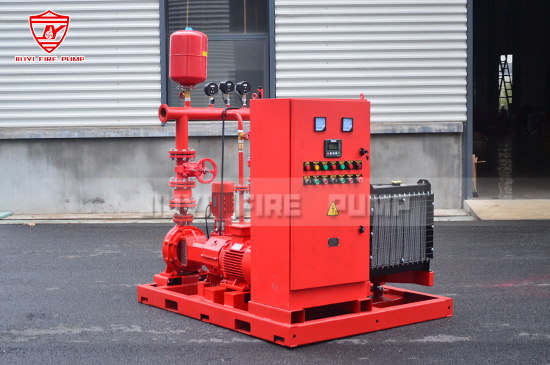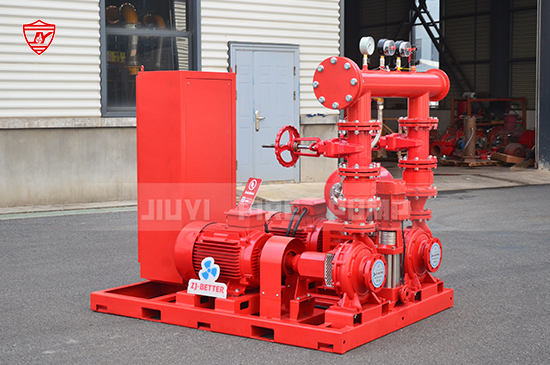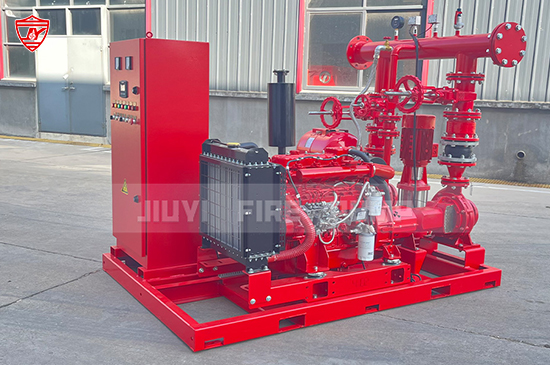Fire pumps are critical components of fire protection systems, ensuring reliable water delivery during emergencies. Whether you operate in a commercial, industrial, or residential environment, understanding the lifespan of your fire pump is essential for safety, compliance, and budgeting. In this article, we’ll explore how long fire pumps typically last, what influences their longevity, how to extend their service life, and when replacement becomes necessary.
1. Average Lifespan of a Fire Pump
Under normal operating conditions and with proper maintenance, the average lifespan of a fire pump ranges between 20 to 25 years. This estimate applies to both electric motor-driven and diesel engine-driven fire pumps.
However, these are general benchmarks. Some fire pumps have been known to last even longer, while others may require replacement sooner depending on usage, environment, and upkeep.
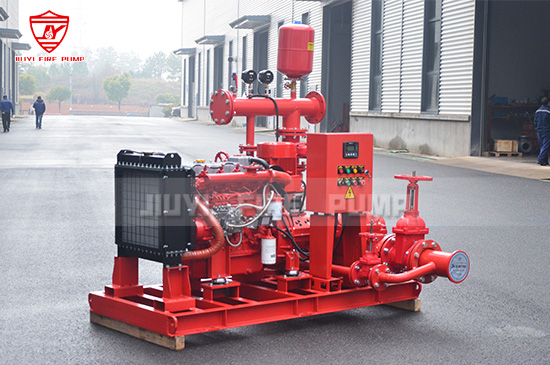
2. What Factors Affect Fire Pump Lifespan?
Several key factors determine how long a fire pump will remain operational and efficient:
a. Maintenance Frequency and Quality
Following a strict preventive maintenance schedule per NFPA 25: Standard for the Inspection, Testing, and Maintenance of Water-Based Fire Protection Systems is the most effective way to extend a fire pump’s lifespan.
b. Pump Type
-
Electric fire pumps generally require less maintenance and tend to last longer.
-
Diesel fire pumps have more mechanical components (engine, cooling, fuel system) and may wear faster.
c. Installation Environment
Corrosive environments, high humidity, or unclean water sources can lead to premature wear of internal pump components such as impellers and casings.
d. Operating Conditions
Fire pumps are designed to run intermittently during testing or emergencies. If a fire pump is used for purposes beyond its scope or runs continuously, it may experience accelerated wear.
e. Pump Sizing and System Design
Improperly sized fire pumps or systems that don’t follow NFPA 20 design standards can cause cavitation, pressure surges, or system inefficiencies that shorten equipment life.
3. NFPA 25 Testing and Maintenance Requirements
According to NFPA 25, the following routine testing and maintenance are required:
-
Weekly/Monthly: Visual inspections, churn tests (no-flow condition), and checking diesel engine batteries.
-
Annually: Flow testing to determine actual pump performance.
-
Every 5 Years: Full internal inspection (as per manufacturer or NFPA guidance).
Neglecting these procedures not only shortens the pump’s life but also poses legal and safety risks.
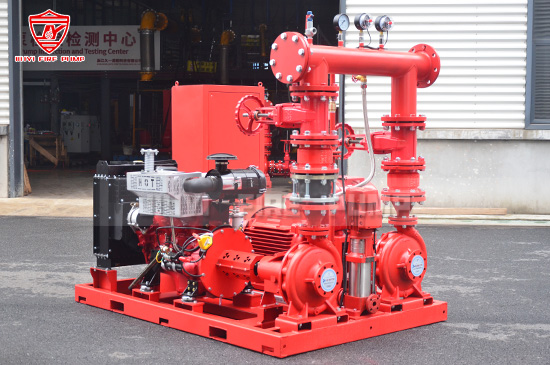
4. Signs a Fire Pump May Be Nearing End of Life
If your fire pump exhibits the following symptoms, it may be time to consider repair or replacement:
-
Inconsistent Flow or Pressure: If test results repeatedly show poor performance or pressure below design requirements.
-
Excessive Noise or Vibration: Could indicate bearing or shaft wear, impeller damage, or motor misalignment.
-
Corrosion or Pitting: Particularly in the impeller, casing, or pump shaft, especially in older systems.
-
Frequent Repairs or Breakdowns: If repairs become more frequent and costlier, a full replacement may be more economical.
5. Electric vs Diesel Fire Pump Lifespan
Here’s how the lifespan generally compares by type:
| Pump Type | Average Lifespan | Maintenance Notes |
|---|---|---|
| Electric Fire Pump | 25–30 years | Fewer moving parts, longer-lasting components. |
| Diesel Fire Pump | 20–25 years | More components subject to mechanical wear. |
Electric fire pumps may have a longer life if operated under clean and controlled conditions, but diesel pumps, though more robust, require more service attention due to engine complexity.
6. Can Fire Pumps Be Rebuilt or Refurbished?
Yes. If your pump casing is still in good condition and the shaft and impeller can be re-machined or replaced, rebuilding the fire pump can be a cost-effective option. Many facilities choose to rebuild fire pumps at the 15–20 year mark to restore original performance and delay full system replacement.
Rebuilding is often preferable if:
-
Your pump has a unique footprint or is difficult to replace.
-
Downtime for replacement is not feasible.
-
You need to extend operation until capital budgets allow for full replacement.
7. Best Practices to Extend Fire Pump Lifespan
To maximize the service life of your fire pump, follow these best practices:
Regular Testing and Maintenance
Adhere strictly to NFPA 25 schedules and manufacturer recommendations.
Keep Records
Document all inspections, maintenance work, test results, and repairs. Historical data helps with trend analysis and early problem detection.
Use Clean Water Sources
Avoid using untreated water that contains sediment, which can wear down internal pump components.
Invest in Quality Components
Choosing a UL Listed or FM Approved fire pump manufactured to NFPA 20 standards ensures long-term reliability.
Protect Against Environmental Exposure
Install protective coatings, shelter pumps from elements, and monitor room temperature and humidity.
8. When to Replace a Fire Pump
Fire pumps are safety-critical assets, and replacement decisions should be guided by data and compliance needs. Consider replacement when:
-
The pump fails annual flow tests and cannot be restored through servicing.
-
Spare parts for the current model are no longer available.
-
The system has been upgraded or modified beyond the capacity of the original pump.
-
The total cost of frequent repairs surpasses the cost of replacement.
-
The fire marshal or insurance provider recommends it based on inspection findings.
Many organizations schedule replacement in tandem with facility upgrades, water supply changes, or system redesigns.
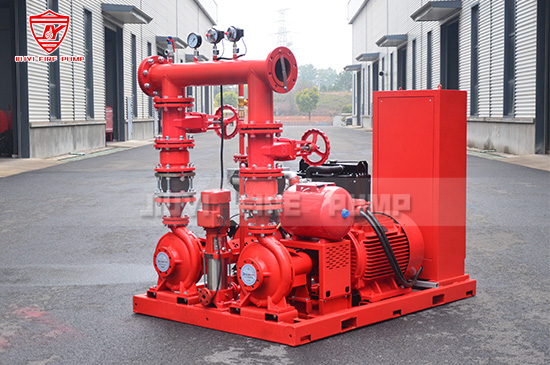
9. Conclusion
Understanding the lifespan of a fire pump is crucial for ensuring uninterrupted fire protection, regulatory compliance, and efficient budgeting. With an average life expectancy of 20 to 25 years, a well-maintained fire pump can offer decades of reliable service. However, maintenance, environmental conditions, and usage patterns all influence actual longevity.
As a manufacturer of UL Listed and NFPA 20-compliant fire pump systems, we emphasize the importance of quality, regular inspection, and informed planning. Whether you need guidance on pump maintenance, replacement options, or selecting the right model for your facility, our team is here to help.

